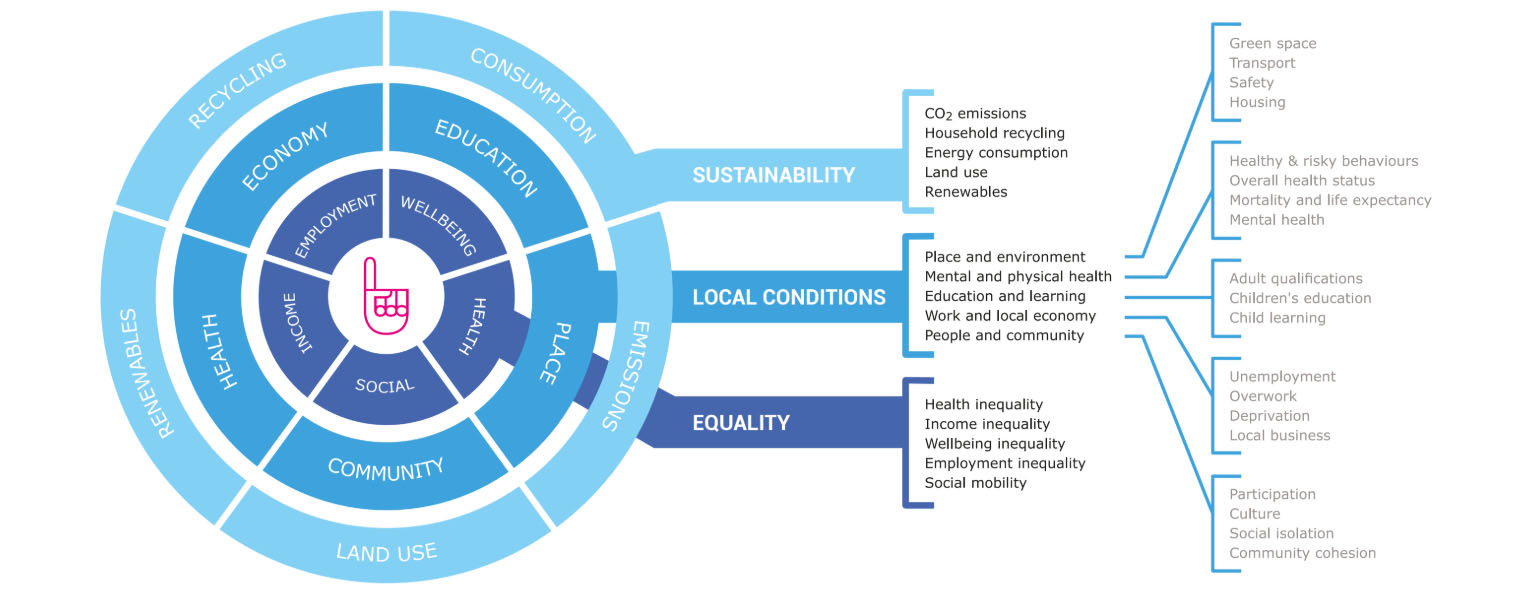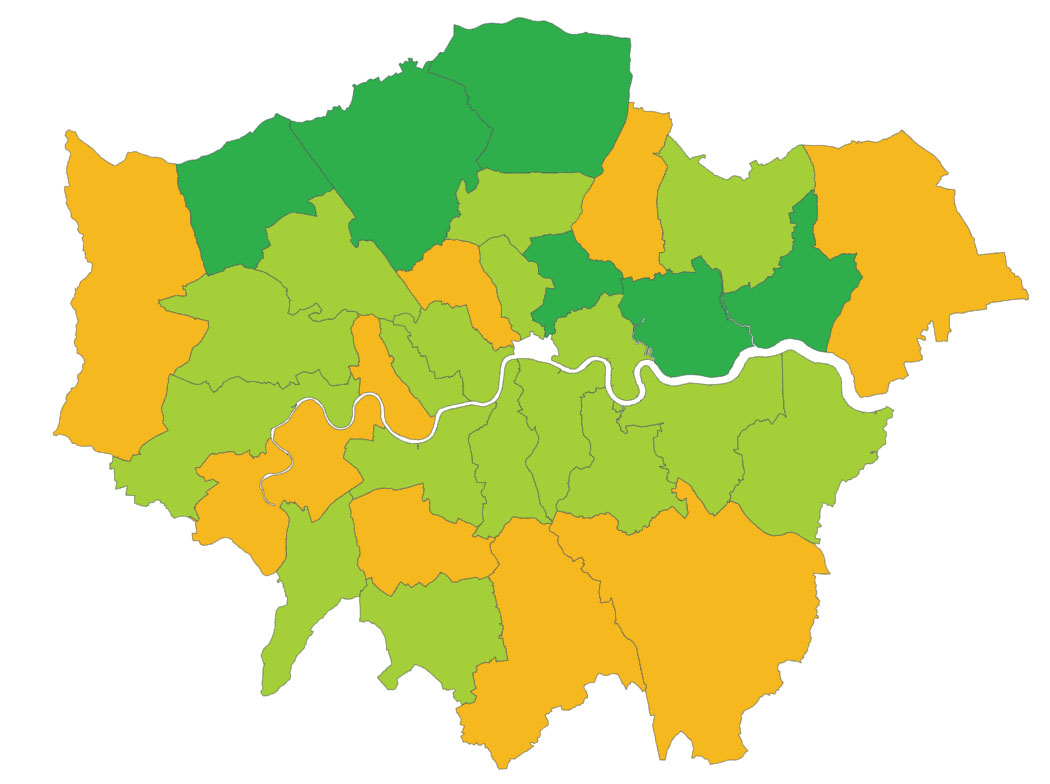
Today, our partners at Happy City publish the second Thriving Places Index since its launch last year. In today’s guest blog, Wren Aigaki-Lander, Head of Development, explains what the Index looks at, why it’s important and what this year’s findings are.
Now in its second year, Happy City’s Thriving Places Index shows a clear and comprehensive vision of what a thriving place looks like. Until we focus on wellbeing as a goal in itself, and measure our progress against that, we will continue to strive for, and deliver, the wrong outcomes. The Thriving Places Index aims to make it possible, and practical, for local authority areas right across England and Wales to see how they are doing at creating the conditions for people to thrive.
The Thriving Places Index measures the local conditions for wellbeing, and whether those conditions are being delivered fairly and sustainably. It consists of a broad set of indicators grouped into headline elements – Local Conditions, Sustainability, Equality – domains and sub-domains, from datasets produced by established national data agencies such as the Office for National Statistics , Public Health England and the Index of Multiple Deprivation.

We select indicators that we know measure, or provide a proxy for, something that is known to influence subjective wellbeing. The topics are all within the remit of a local area to influence through policy and action. We combine this into easy-to-understand scorecards for each local authority area, as well as producing reports, analysis and maps presenting the data in different ways.
The Thriving Places Index framework offers a new way to think about and change policy or project emphasis, in particular if you are seeking to move to a more interconnected model of local prosperity with wellbeing and fairness at its core.
It enables you to do the following.
- Look at wellbeing in the round rather than simply in a health context – it shows the broader, holistic reach of wellbeing for place-based change – and provides a way of targeting resources and tracking progress around multi-disciplinary shared goals.
- Use a framework for a wellbeing economics budget, which considers more traditional factors while asking explicit questions around sustainability and equality.
- Create a shared focus and narrative in complex multi-stakeholder projects.
Headline results from this year’s index
- Sustainability is challenging
No council scores well in every area of sustainability, reflecting how challenging it is for councils to cover all bases locally on sustainability issues. The most balanced performers across all five indicators are South Gloucestershire, Isle of Wight, Hampshire, City of York, Leeds, Poole, St Helens, Stoke-on-Trent and Kensington & Chelsea.
- Cities do best at equality
London boroughs perform well on the Equality headline element. A general pattern seems to be that areas with greater diversity of population – usually metropolitan or predominantly urban local authorities – score higher across all aspects of Equality.

- North-South divide and urban-rural differences
There is a noticeable North-South divide when it comes to Local Conditions averages – of the top ten local authorities, eight are in the South and seven in the South East – reflecting the latter’s overall affluence and absence of many of the challenges associated with more dense urban living.
What next?
The 2019 results for 373 local authorities in England and Wales are now live at www.thrivingplacesindex.org as well as maps and reports with analysis from the 2019 scores. There’s an immense body of data, research and analysis behind the Index but we’ve worked hard to make the results accessible and practical to use. You can also check out the Happiness Pulse, which helps measure, understand, and improve wellbeing with a simple online survey.
Go to the site to see the latest results and analysis or get in touch with Happy City to find out more about using the Thriving Places Index to guide your work at thrivingplaces@happycity.org.uk



